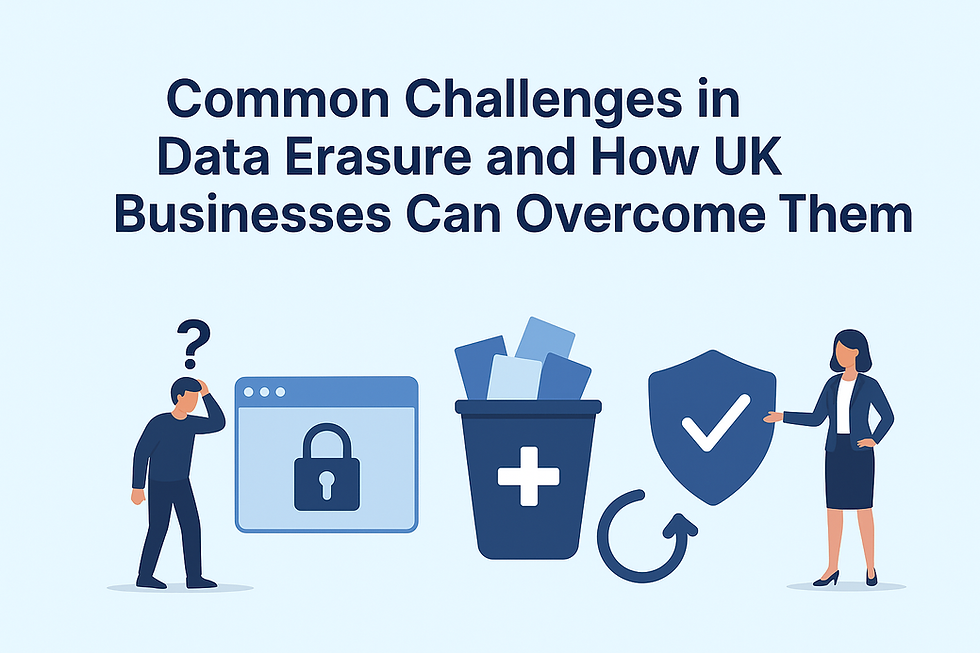How to Audit Your IT Recycling Provider: Checklists and Red Flags
- computerwasterecyc
- Oct 13
- 3 min read

In an era where data security and environmental responsibility are more critical than ever, choosing the right IT recycling provider can make or break your organization’s compliance and sustainability goals. Many businesses partner with IT recycling companies to ensure their old equipment is handled securely, ethically, and in compliance with data protection laws like GDPR.
However, not all providers follow best practices. Some may cut corners, risking data breaches or improper e-waste handling that could damage both your reputation and the environment. That’s why auditing your IT recycling provider is essential. A thorough audit helps ensure your assets are managed securely from collection to final disposal.
Why Auditing Matters
When your company decommissions old hardware such as servers, laptops, or storage devices, it’s not just about recycling the materials; it’s about protecting sensitive information and ensuring full traceability. Auditing your IT recycling partner ensures transparency, compliance, and peace of mind.
A reliable partner should demonstrate accountability through documentation, certifications, and a clear chain of custody. If any of these are missing, it’s a sign you might not be getting the level of service or security your organization deserves.
Step 1: Review Their Certifications and Policies
Begin your audit by verifying whether the provider holds certifications that demonstrate compliance with recognized standards. Look for certifications such as:
ISO 27001 – Information Security Management
ISO 14001 – Environmental Management
WEEE Compliance – Waste Electrical and Electronic Equipment Directive
ADISA or NAID – For data destruction standards
These certifications indicate that the provider adheres to strict security and environmental protocols. Additionally, verify whether their IT recycling services include secure data destruction and environmentally responsible recycling practices. A professional provider will never hesitate to share documentation proving their compliance and procedures.
Step 2: Evaluate Data Destruction Processes
Data security is one of the biggest risks during IT disposal. Your audit should focus heavily on how the provider manages data-bearing devices such as hard drives, SSDs, and servers.
Ask questions like:
Do they offer on-site data destruction?
Can they provide certificates of data destruction for every asset?
What methods do they use — physical shredding, degaussing, or software-based wiping?
Are their destruction methods GDPR-compliant?
Ensure they use certified, verifiable processes. Companies like Computer Waste London offer complete transparency with tamper-proof documentation and chain-of-custody reports, guaranteeing that your sensitive data is permanently destroyed.
Step 3: Inspect Environmental Compliance and Recycling Practices
Sustainability is another key factor in your audit. Responsible recyclers should have clear policies for minimizing waste, maximizing reuse, and preventing illegal e-waste exports.
During your audit, request information on how materials are separated, whether parts are refurbished, and how non-reusable items are disposed of. A trustworthy provider will have traceability for every asset from collection to recycling.
Additionally, ensure their computer recycling services follow eco-friendly methods that align with local and international environmental regulations. This not only reduces your company’s carbon footprint but also contributes to a circular economy by reusing valuable materials safely.
Step 4: Review Documentation and Chain of Custody
Every stage of your IT recycling process should be documented, from collection to destruction. Reliable providers issue certificates for both data destruction and recycling, ensuring proof of compliance.
Ask for:
Collection receipts
Transport logs
Certificates of data destruction
Recycling summary reports
These documents form a verifiable audit trail, protecting your company if regulators ever question your e-waste management practices. Computer Waste London provides clients with detailed reports and certification for every item processed, making audits and compliance checks seamless and worry-free.
Step 5: Watch for Red Flags
Even if a provider seems legitimate, there are warning signs you should never ignore:
Lack of transparency: They hesitate to share certifications or audit reports.
Unclear data destruction methods: They can’t explain how data is destroyed.
No environmental commitment: They don’t mention recycling or reuse strategies.
Suspiciously low prices: Cutting costs might mean cutting corners on security or compliance.
No tracking system: They can’t trace your assets once collected.
If you encounter any of these red flags, it’s time to reconsider your partnership. The short-term savings may lead to long-term compliance and reputation issues.
Conclusion
Auditing your IT recycling provider isn’t just a box-ticking exercise; it’s a strategic move that safeguards your business’s reputation, ensures legal compliance, and supports your sustainability goals. By following this checklist and being aware of common red flags, you can partner confidently with a provider that values transparency, data security, and environmental stewardship.
Choosing a trusted name like Computer Waste London gives you peace of mind that every step from collection to data destruction is handled responsibly and securely. For reliable, certified IT disposal solutions, contact Computer Waste London today and make your IT recycling process truly risk-free and compliant.







Comments